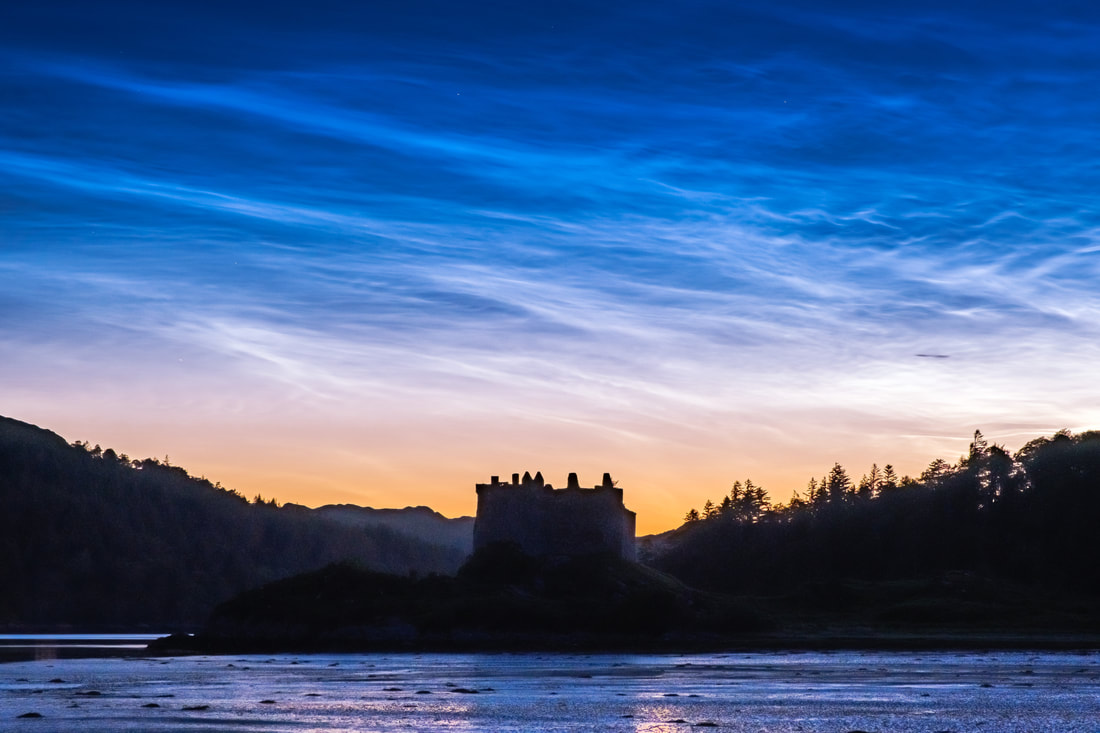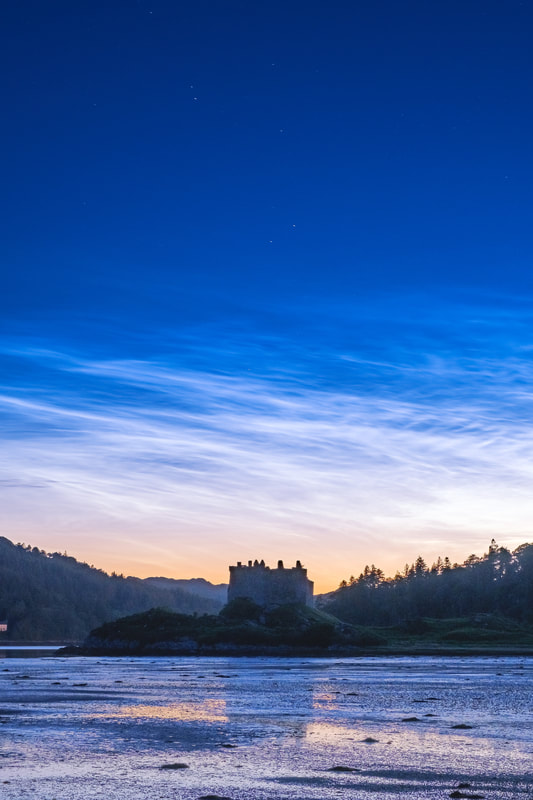|
Once rare noctilucent, or “night-shining” clouds are becoming a more common feature of our summer night sky and the increased presence of these ghostly whispers of light shimmering high up in the Earth’s atmosphere is thought to be as a result of human-caused climate change. Although this is certainly cause for concern, the sight of them is quite mesmerising and if you are a night owl, it is a sight that is not too difficult to photograph. In the 8 or so weeks either side of the Summer Solstice, which this year was on 21 June, the days are long and the nights are short. In fact, the sun gets to no more than 10-15 degrees below the horizon and this makes it a lean period for both aurora chasers and stargazers because astronomical, or full darkness does not occur at any point during the night. The resulting all-night twilight means that it is simply too light to see the “Merry Dancers” and all but the brightest stars. However, all is not lost because what you can see are noctilucent, or “night-shining” clouds. They become visible in the north to north-west sky as darkness falls and just as the brightest stars become visible. They have the appearance of ghostly whispers of light shimmering in the all-night twilight and are usually set against a pearly-blue sky. These night-shining clouds are the highest clouds in Earth's atmosphere. They form in the middle atmosphere, or mesosphere, roughly 80 kilometres (50 miles) above Earth's surface. They are thought to be made of ice crystals that form on fine dust particles from meteors and volcanic activity. These ice coated dust particles then reflect the light that the sun projects high up into the sky, when it is between 6 to 16 degrees below the horizon, to create an illuminated cloudy veil in the northern sky at latitudes between ±50° and ±70°. They are first known to have been observed in 1885, two years after the 1883 eruption of Krakatoa, but it remains unclear as to whether their appearance had anything to do with the volcanic eruption or whether their discovery was due to more people observing the spectacular sunsets caused by the volcanic debris in the atmosphere.
This does indeed give me cause for concern, but nevertheless, the sight of these shimmering and wispy clouds illuminating the upper reaches of our summer night sky is quite mesmerising. I was fortunate enough to both see and photograph them on a mid-July night at Castle Tioram when it barely got dark. They seemed to not only illuminate the sky but also the landscape around me. There is still time to see them so, if you are outside after midnight on a clear night, look north and you may be able to pick them out. If you have a modern digital camera fitted with a wide-angle lens which you can mount on a tripod, you can try taking some photographs of them yourself. Put the camera on the manual setting, open up the aperture to at least f4, set your ISO 800 and take a few test shots at exposures of several seconds until you find the exposure time that works. You could even try photographing them with your smart phone if it has a “Night Mode” setting.
0 Comments
Your comment will be posted after it is approved.
Leave a Reply. |
AuthorHi, Archives
July 2024
Categories
All
|
Steven Marshall Photography, Rockpool House, Resipole, Strontian, Acharacle, PH36 4HX
Telephone: 01967 431 335 | Mobile: 07585 910 058 | Email: [email protected]
Telephone: 01967 431 335 | Mobile: 07585 910 058 | Email: [email protected]
All Images & Text Copyright © 2024 - Steven Marshall - All Rights Reserved





